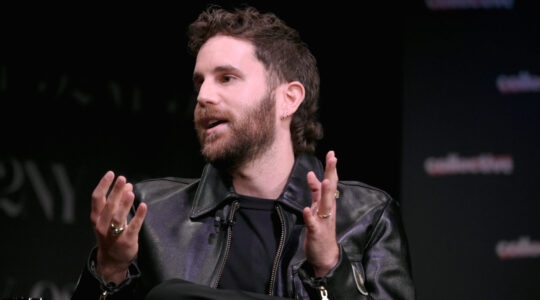Last week marked the eighth anniversary of Hurricane Katrina’s devastation of New Orleans. One of the deadliest and costliest tropical storms in American history, the storm claimed 1,833 lives and cost nearly $81 billion in property damage according to government figures. The Jews of the Crescent City weren’t spared, losing several houses of worship and suffering a huge population drop that took years to recover.
In the wake of the storm, Jews from around the world marshaled funds and services to send to New Orleans, with some synagogues symbolically adopting communities along the Gulf Coast affected by the storm. Food was gathered, millions of dollars were raised, and thousands of toys were collected in the days after the tragedy. The Jewish Federations of North America, then known as United Jewish Communities, raised $28 million for New Orleans and the Gulf Coast. In the weeks after the storm, the federations provided immediate relief in the form of food and emergency supplies. Longer term, the federations helped fund needs like housing and counseling.Of particular concern in the immediate wake of Katrina was the ability to provide kosher food to those stranded in ravaged parts of New Orleans. Rabbis Tzemach Rosenfeld and Chaim Kolodny, leaders of the L.A. chapter of Hatzolah,brought suitcases loaded with kosher food to New Orleans.
For those who fled to other cities, it quickly became clear they would not be returning quickly. Some students from New Orleans enrolled at other schools like the Margolin Hebrew Academy in Memphis, but other students floated throughout the year.
While most relief missions focused on immediate material needs, other focused on providing spiritual sustenance to affected communities, offering grief counseling and spiritual guidance. In September 2006, two rabbis from the Union for Reform Judaism counseled members of the Beth Israel Congregation in Jackson, Miss., which had taken in more than 100 displaced Jews from Biloxi and New Orleans. Four yeshiva students from Chabad also helped out, cleaning up the synagogue and counseling the devastated congregants. Many would follow in the years years that followed.
But despite the general outpouring of kindness, some critics said that older Jews were not getting the support they needed. “Amid the darkness and chaos, there were acts of heroism and compassion, including the near miraculous evacuation of all of the residents, staff and family members of Woldenberg Village, New Orleans’ Jewish home for the elderly,” Rabbi Dayle Friedman wrote in a JTA Op-Ed. “Yet sadly, these sparks of goodness seem to have been the exception, not the rule.”
It took months for the full extent of Katrina’s impact to be assessed. “The effect on Gulf Coast Jewish communities will be dramatic,” predicted Daniel Freelander, the Union for Reform Judaism’s vice president. “We assume that 25 to 40 percent of the Jewish community will not return. Those who evacuated have found new jobs in Houston, Atlanta and Memphis, and their children are getting adjusted to new schools.”
However, there were signs of hope. At the opening of the URJ’s biennial, four rabbis paraded to the front of the auditorium carrying Torahs rescued from Katrina’s waters.
In 2010, Jewish relief efforts in New Orleans came under fire when David Simon, writer and creator of the TV show “The Wire,” lambasted Jewish organizations for their focus on Jewish communities. Simon claimed that Jews were not as hard-hit as blacks, and that the need for basic sustenance in black communities was more important than rebuilding a synagogue. Simon delivered his remarks at the opening plenary of Jewish Federations of North America General Assembly in New Orleans, and predictably drew pushback from a range of Jewish organizations.
One of the most poignant stories to emerge from the story was that of the Modern Orthodox synagogue Congregation Beth Israel, a century-old congregation that reconvened in a room at a Reform temple after Katrina. Five years later, in 2010, the congregation celebrated the reopening of its sanctuary at a gathering which brought together Orthodox, Reform, and Conservative Jews. The celebration would come to signify the power of tragedy to bring Jews together.
JTA has documented Jewish history in real-time for over a century. Keep our journalism strong by joining us in supporting independent, award-winning reporting.





